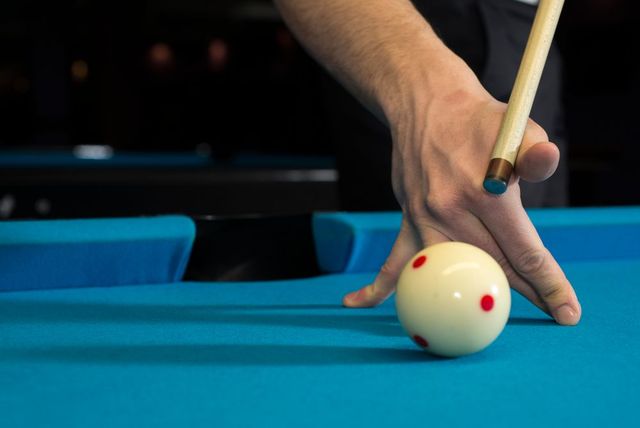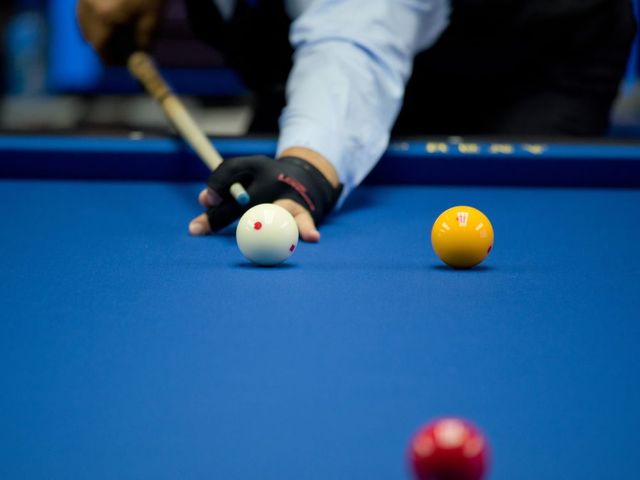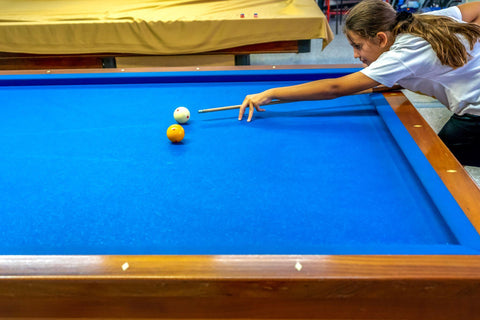Mastering Ball Quantity and Effect Settings in Carom Billiards
Carom billiards is a fascinating cue sport that emphasizes precision, control, and a deep understanding of angles. Unlike pool, where pocketing balls is the main goal, carom billiards focuses on making the cue ball contact both object balls in a single shot. To succeed, players need to master concepts such as ball quantity and effect settings.
The training diagram above provides a helpful visualization of how ball contact and cue ball spin interact. In this article, we’ll break down what “quantity ball” means, how effect (+1, +2) settings influence shots, and why mastering this skill is essential for improving your carom billiards game.

What Is Ball Quantity in Carom Billiards?
Ball quantity refers to the thickness of contact when your cue ball strikes the object ball. Instead of thinking in percentages, players often divide the object ball into segments, or “quantities.”
-
Standard Contact (Fuller Hit) – Equivalent to 6 parts, where the cue ball strikes the object ball more directly.
-
+1 Contact (Half Hit) – Equivalent to 3 parts, where the cue ball only makes partial contact.
-
+2 Contact (Thin Hit) – Equivalent to 1 part, a very fine cut where the cue ball only grazes the edge.
Each level of contact drastically changes the cue ball’s path and speed after impact. Understanding this is crucial for positioning and achieving the second contact in carom shots.
Effect Settings: The Role of Spin
The second major element is effect (or “English”), which refers to applying spin on the cue ball. In the diagram, this is represented by the circular chart with different strike zones.
-
Standard (Center Hit) – Minimal spin, straight cue ball reaction.
-
+1 Effect – Moderate side spin, making the ball curve or rebound at wider angles.
-
+2 Effect – Maximum spin, allowing advanced control but harder to execute consistently.
By combining ball quantity with the right level of spin, a player can adjust the cue ball’s path to reach the second object ball with precision.

How Ball Quantity and Spin Work Together
Think of ball quantity as the entry point and spin as the steering system. Together, they control trajectory.
For example:
-
A thick hit (Standard) with no spin sends the cue ball in a straight path, useful for short positions.
-
A thin hit (+2) with added side spin can widen angles dramatically, ideal for three-cushion shots.
-
A medium hit (+1) with controlled spin balances accuracy and flexibility, often used in defensive play.
The synergy of these two elements allows players to design shots in advance and avoid relying solely on luck.
Why It Matters in Carom Billiards
Unlike pool, where players can sometimes rely on power, carom billiards demands accuracy and planning. The difference between a successful point and a miss can be just a millimeter of contact.
Mastering ball quantity and effect helps players:
-
Control Position – Keeping the cue ball in favorable zones for the next shot.
-
Expand Shot Options – Being able to choose between direct caroms, cushion-first shots, or multi-rail solutions.
-
Improve Consistency – Reducing errors caused by misjudging contact thickness.
Training Tips for Players
Here are some practical ways to practice ball quantity and effect:
-
Use Training Diagrams
Recreate the setup shown in the diagram and experiment with different contacts. Start with Standard, then gradually practice +1 and +2 hits. -
Focus on Cue Ball Control
Instead of just scoring points, pay attention to where your cue ball stops. Precision is more valuable than power. -
Start Small With Spin
Beginners often overuse side spin. Start with minimal effect and only add spin when necessary. -
Record Your Practice
Watching replays helps identify small mistakes in contact point and follow-through. -
Learn from Professionals
Study professional three-cushion billiards matches to see how experts use ball quantity and spin to solve complex positions.
Common Mistakes to Avoid
Even experienced players sometimes misapply these concepts. Here are the top errors:
-
Overhitting the Cue Ball – Power can distort spin and reduce accuracy.
-
Misjudging Thin Hits – +2 contacts are harder to control and often lead to misses.
-
Overusing Side Spin – Too much spin can cause unpredictable rebound angles.
-
Ignoring Follow-Through – A clean stroke ensures the spin transfers correctly.
By being mindful of these mistakes, players can refine their execution and build more reliable shot-making skills.
The Mental Side of Precision
Carom billiards isn’t just physical—it’s highly mental. Players must calculate angles, predict rebound paths, and visualize outcomes before taking the shot. Ball quantity and effect settings act as a structured system that simplifies these decisions. With practice, this mental framework becomes second nature, allowing players to focus more on strategy and less on guesswork.
Conclusion
Ball quantity and effect settings are the foundation of carom billiards mastery. Understanding how contact thickness and spin interact will dramatically improve your accuracy, positioning, and shot creativity.
By practicing systematically—starting with standard hits, then gradually adding spin—you’ll build the skills needed to control the cue ball with confidence. Whether you’re aiming to improve your consistency or step up to competitive three-cushion play, mastering this balance is the key to success.


